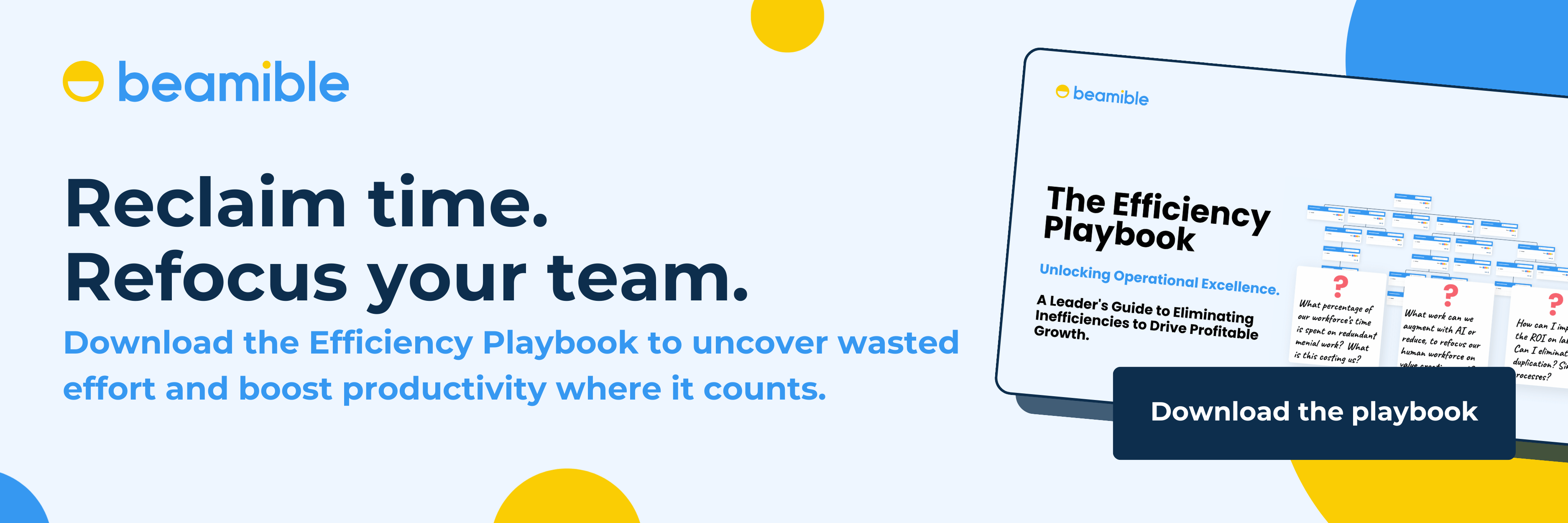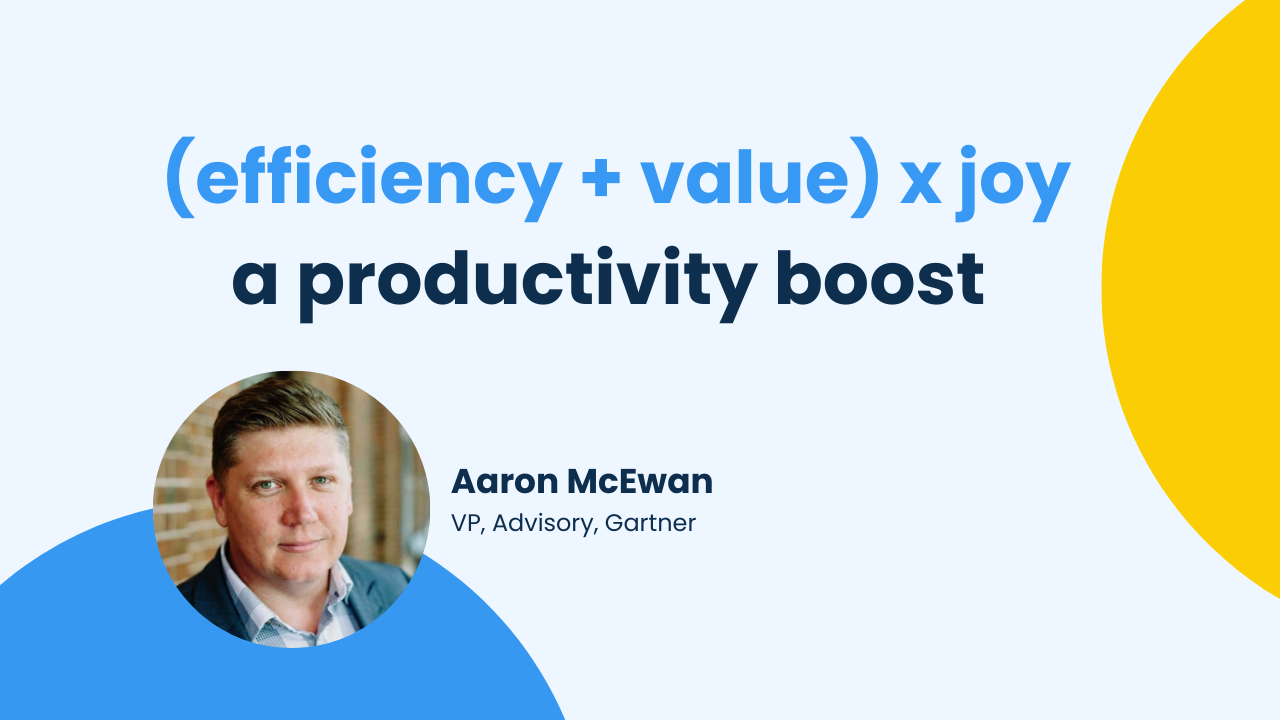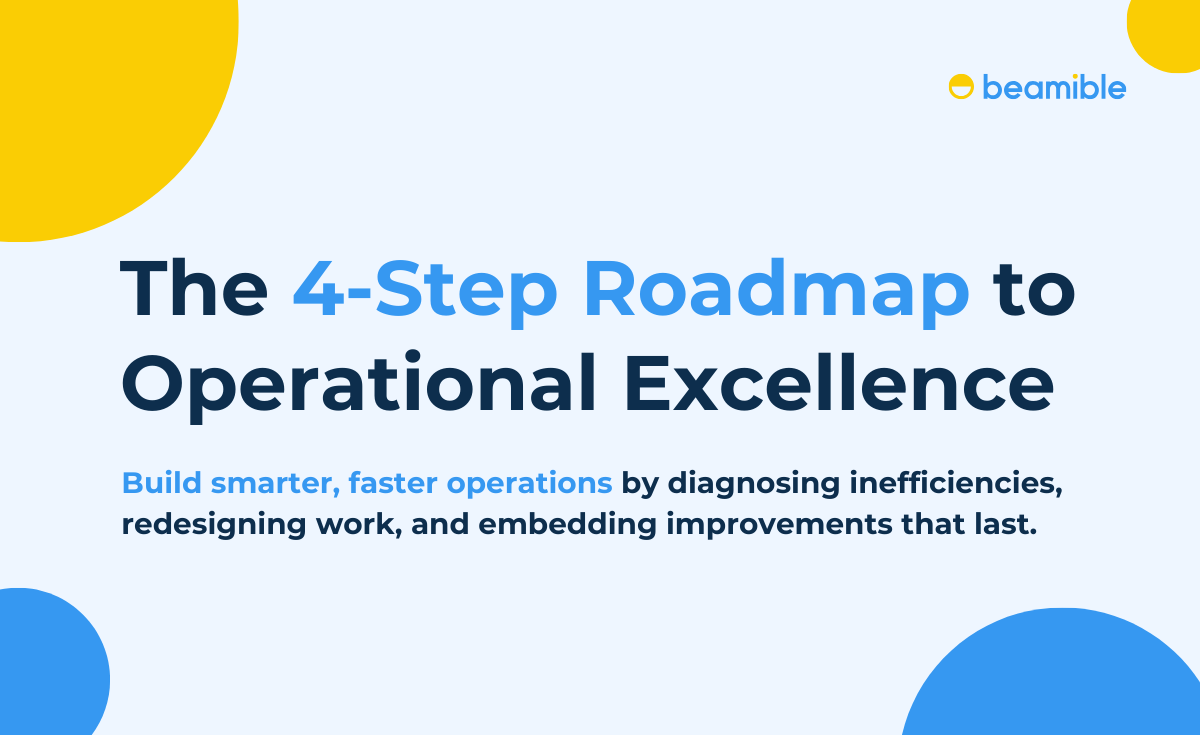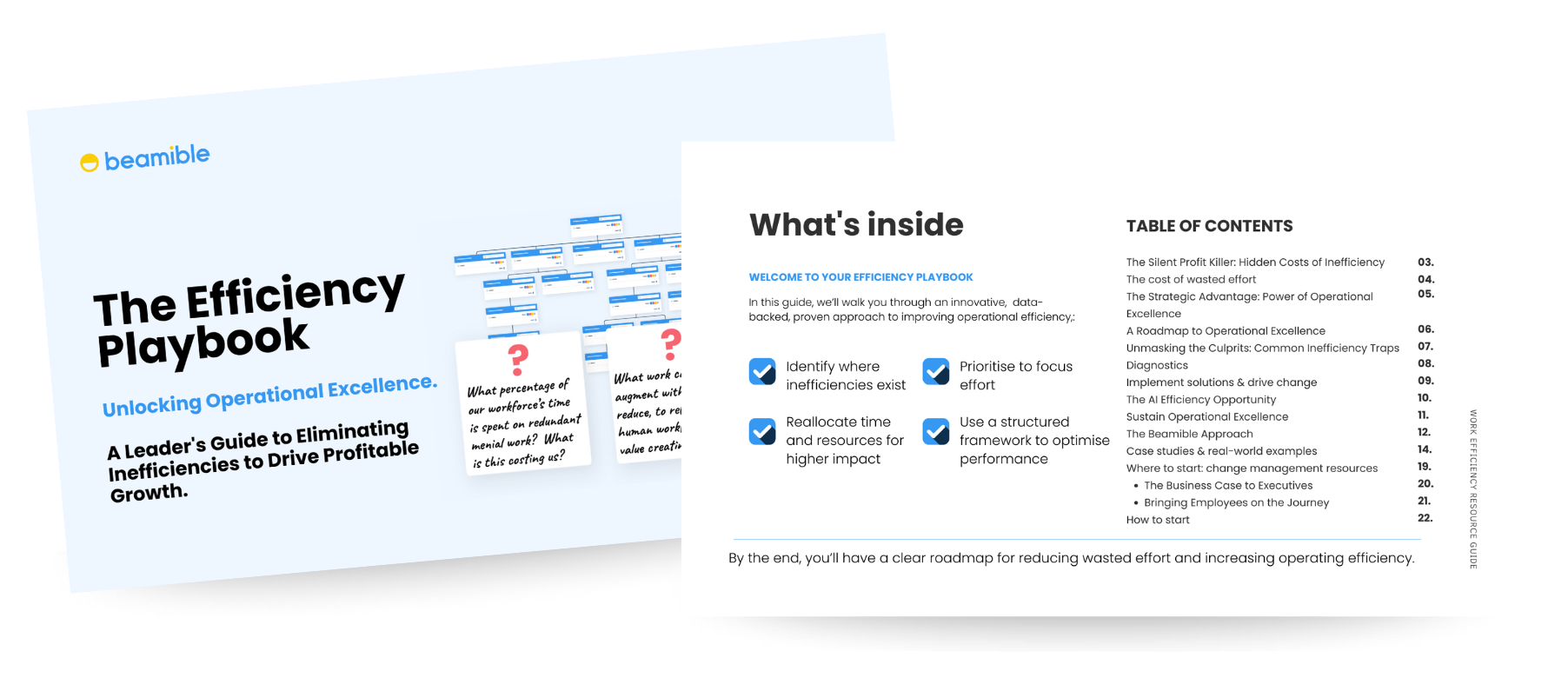Inefficiency is expensive—but it often hides in plain sight.
Beamible’s data shows 41% of employee time is spent on low-value, misaligned, or duplicative work. That’s nearly two days a week per person, lost to inefficiencies that erode productivity, morale, and profitability.
For executive and operations leaders focused on growth, performance, and transformation, this presents both a risk and an opportunity.
What is Organisational Inefficiency?
Organisational inefficiency doesn’t always announce itself. It doesn’t appear in dashboards or reports. Instead, it builds gradually as misaligned responsibilities, duplicated effort, unclear accountabilities, and slow decisions accumulate.
This is what Beamible refers to as organisational drag—the cumulative friction that delays progress, erodes morale, and limits your ability to respond, adapt, and grow.
Common Indicators of Organisational Drag
- Multiple handovers for simple tasks
- Highly skilled people are tied up in administrative duties
- Repeated work due to poor visibility
- Time lost chasing approvals or duplicating data entry
- Roles defined by history, not strategy
This drag builds quietly and consistently. It spreads across departments, compounds with complexity, and limits an organisation’s ability to respond, adapt, and grow.
Quantifying the True Cost of Wasted Effort
Workforce efficiency directly correlates with profitability.
Let’s say you’re running a mid-sized organisation with 440 employees earning an average of $95,000. If 41% of their time is absorbed by inefficiency, that’s $13.7 million in wasted labour cost annually.
And that figure doesn’t even account for the indirect impact—missed opportunities, disengaged teams, bottlenecks in execution, and slower innovation.
Making the Business Case for Change
When building a case for operational improvement, leaders need more than anecdotes. They need visibility. They need data.
The strongest business cases are grounded in:
- A clear baseline: time, effort, and cost across teams
- Visibility into where work actually happens
- Insight into the value each activity delivers
Beamible enables this through a simple, structured diagnostic. By mapping tasks and activities across roles, leaders get the clarity to redirect investment—without needing more headcount.
The ‘Top of License’ Model
Top of license is a principle borrowed from healthcare, where professionals operate at the highest level of their skill set. Applied to organisational work design, it means ensuring every team member spends most of their time on tasks they’re uniquely qualified for.
This is where real ROI is unlocked. When teams are structured so that effort matches skill, work aligned with expertise increases performance, boosts morale, and accelerates impact.
Beamible’s task intelligence enables this by mapping activity to capability and removing or automating work that no longer belongs in the role.
A Real-World Scenario
In one example, a leadership audit uncovered that 26% of senior leader time was spent on low-importance admin. By simplifying processes and integrating automation, the organisation shifted leaders’ capacity to innovation and growth-driving workstreams.
Beamible in Action
Beamible customers are using task-level data to redesign how work gets done—without adding headcount. Examples include:
- A government client reallocating 15% of internal service capacity to frontline delivery
- A large commercial team removing 20% of duplicated effort between layers of management
- An HR team redirecting recruiter time from screening to strategic workforce planning
Each case began by answering a deceptively simple question: “Where is our effort actually going?”
Efficiency as a Strategic Advantage
Workplace efficiency comes from clarity. When leaders have visibility into time, effort, and cost, they can design roles and workflows that drive better results.
Here’s how to begin:
- Scan for visibility: Use a tool like Beamible to map activity and effort across the business
- Prioritise: Use a value-energy matrix to categorise work and identify what to keep, shift, or stop
- Reallocate work: Shift routine or admin-heavy tasks to automation, support roles, or shared services—freeing up skilled team members for higher-impact work
Organisational efficiency drives profitability, momentum, and team performance. And it starts by looking closely at how work is structured
Want to find out where your team’s time is going—and how to get more from it?
Book a free strategy session with Beamible and get a clear plan to reduce inefficiencies and unlock performance.
Get the playbook now and start designing work that drives impact.






